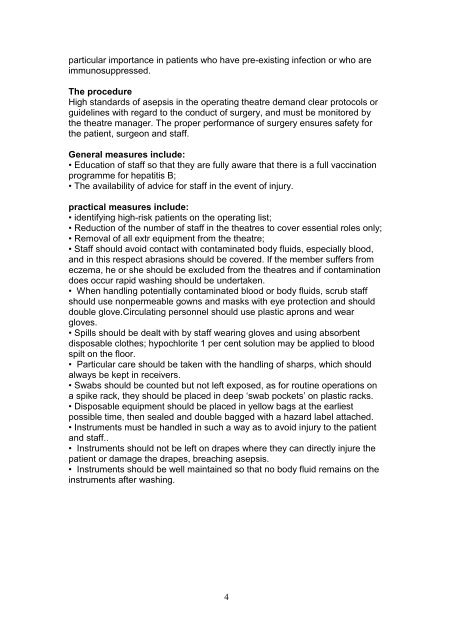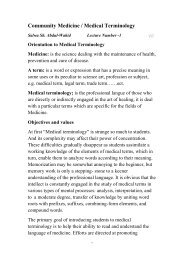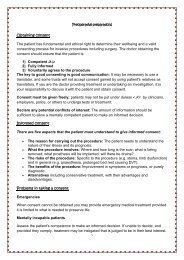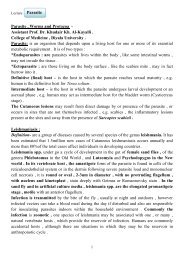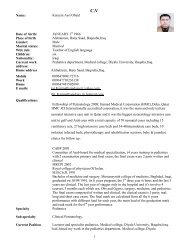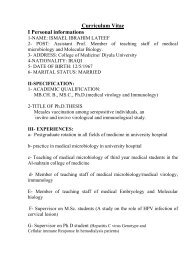Sterilization, disinfection and sterile precaution
Sterilization, disinfection and sterile precaution
Sterilization, disinfection and sterile precaution
Create successful ePaper yourself
Turn your PDF publications into a flip-book with our unique Google optimized e-Paper software.
particular importance in patients who have pre-existing infection or who are<br />
immunosuppressed.<br />
The procedure<br />
High st<strong>and</strong>ards of asepsis in the operating theatre dem<strong>and</strong> clear protocols or<br />
guidelines with regard to the conduct of surgery, <strong>and</strong> must be monitored by<br />
the theatre manager. The proper performance of surgery ensures safety for<br />
the patient, surgeon <strong>and</strong> staff.<br />
General measures include:<br />
• Education of staff so that they are fully aware that there is a full vaccination<br />
programme for hepatitis B;<br />
• The availability of advice for staff in the event of injury.<br />
practical measures include:<br />
• identifying high-risk patients on the operating list;<br />
• Reduction of the number of staff in the theatres to cover essential roles only;<br />
• Removal of all extr equipment from the theatre;<br />
• Staff should avoid contact with contaminated body fluids, especially blood,<br />
<strong>and</strong> in this respect abrasions should be covered. If the member suffers from<br />
eczema, he or she should be excluded from the theatres <strong>and</strong> if contamination<br />
does occur rapid washing should be undertaken.<br />
• When h<strong>and</strong>ling potentially contaminated blood or body fluids, scrub staff<br />
should use nonpermeable gowns <strong>and</strong> masks with eye protection <strong>and</strong> should<br />
double glove.Circulating personnel should use plastic aprons <strong>and</strong> wear<br />
gloves.<br />
• Spills should be dealt with by staff wearing gloves <strong>and</strong> using absorbent<br />
disposable clothes; hypochlorite 1 per cent solution may be applied to blood<br />
spilt on the floor.<br />
• Particular care should be taken with the h<strong>and</strong>ling of sharps, which should<br />
always be kept in receivers.<br />
• Swabs should be counted but not left exposed, as for routine operations on<br />
a spike rack, they should be placed in deep ‘swab pockets’ on plastic racks.<br />
• Disposable equipment should be placed in yellow bags at the earliest<br />
possible time, then sealed <strong>and</strong> double bagged with a hazard label attached.<br />
• Instruments must be h<strong>and</strong>led in such a way as to avoid injury to the patient<br />
<strong>and</strong> staff..<br />
• Instruments should not be left on drapes where they can directly injure the<br />
patient or damage the drapes, breaching asepsis.<br />
• Instruments should be well maintained so that no body fluid remains on the<br />
instruments after washing.<br />
4


